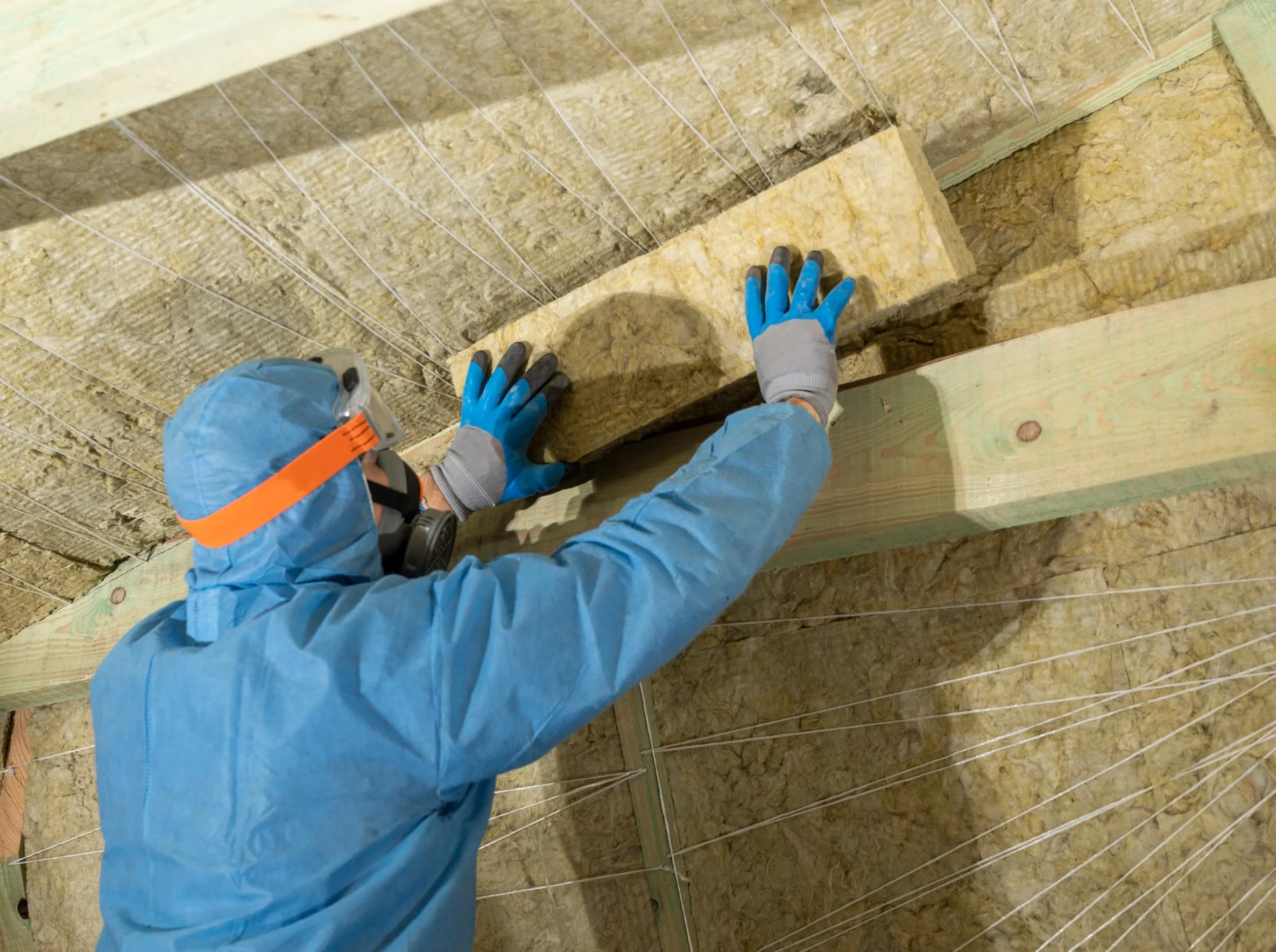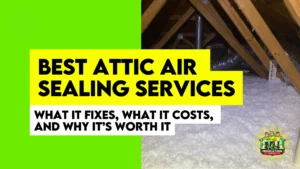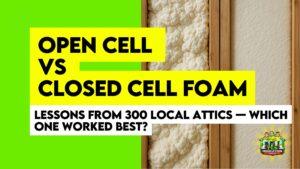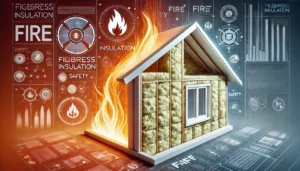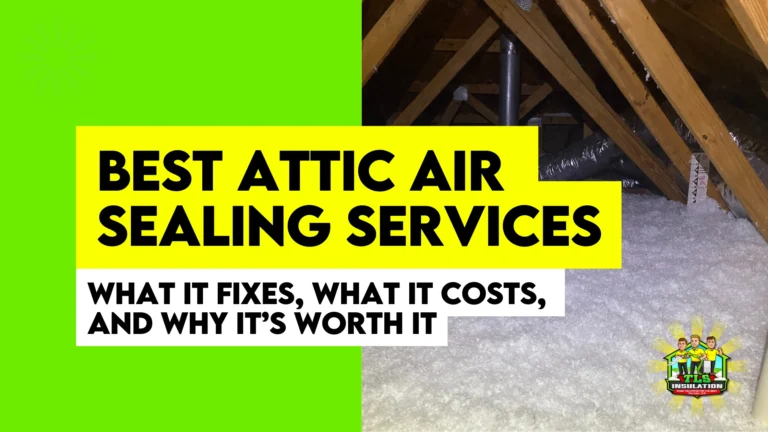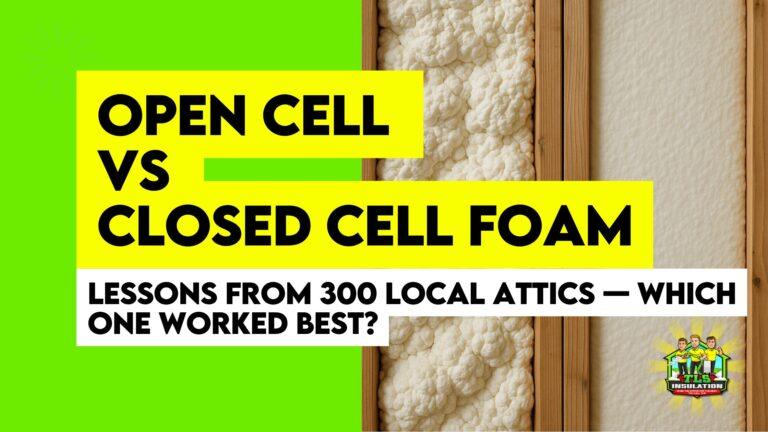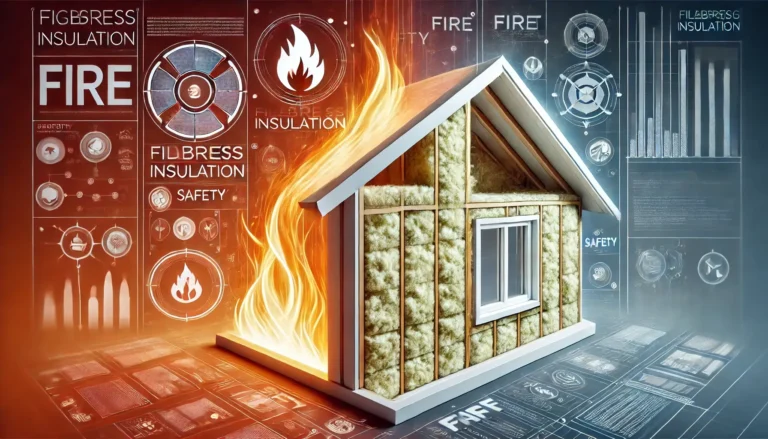Asbestos is a naturally occurring mineral once widely used in building insulation due to its durability, fire resistance, and affordability. It became a popular choice for insulating homes and buildings from the 1920s to the 1980s. However, scientific studies have since revealed its serious health risks, including lung cancer and mesothelioma, caused by the inhalation of microscopic asbestos fibers.
Hey, Are you wondering about yours? Does insulation have asbestos in your home? Does pink insulation have asbestos? Well, it’s crucial to know that asbestos was commonly found in older insulation, often appearing in grey, brown, or white shades. Asbestos fibers can hide in insulation materials, posing hidden dangers when disturbed.
In this blog post, we’ll explain what asbestos insulation looks like, how to spot asbestos in insulation, and the steps you need to take to protect your home and health
Is There Asbestos in Insulation? How to Tell If Insulation Is Asbestos:
Identifying asbestos in insulation can be tricky because it often looks like common insulating materials. Asbestos fibers were mixed with various other compounds, meaning it cannot be reliably identified by color or texture alone. According to the U.S. Environmental Protection Agency (EPA), older homes (pre-1980s) are more likely to contain asbestos, especially in insulation types such as loose-fill, pipe wrap, and attic insulation.
If you’re asking “is there asbestos in insulation?”, particularly in homes built before 1980, it’s important to conduct tests to verify its presence, as asbestos fibers are microscopic and invisible to the naked eye.
What Color Is Asbestos Insulation? Pink or Yellow Insulation
Asbestos insulation comes in various colors and textures, depending on its application and composition. Typically, asbestos insulation is gray, white, or brown, though asbestos was also used in materials like vermiculite, which appears shiny and pebble-like. According to the Agency for Toxic Substances and Disease Registry (ATSDR), the most well-known source of vermiculite insulation—Libby, Montana—contained significant levels of asbestos
On the other hand, if you’re wondering “does pink insulation have asbestos? The answer is generally no. Pink insulation, which is usually fiberglass, does not typically contain asbestos. Owens Corning, the manufacturer of the famous pink insulation, has confirmed that fiberglass insulation is made from glass fibers, not asbestos However, always consult a professional insulation company or a certified contractor if unsure, as appearances can be misleading.
Can You Identify Asbestos Insulation by Color?
Despite these general rules, it’s important to note that asbestos Insulation cannot be definitively identified by color alone. Older forms of insulation, such as loose-fill or blown-in insulation, often contain asbestos even if they appear harmless.
According to the Environmental Protection Agency (EPA), the only reliable way to confirm asbestos presence is through professional testing in an accredited laboratory. Therefore, if you have any doubts about the type of insulation in your home, especially if it was built before the 1980s, it’s crucial to consult with an asbestos inspector before disturbing the material..
How to Properly Test for and Remove Asbestos from Your Home
Look, this isn’t a DIY thing. In fact, this is “Don’t try this home” stuff. Asbestos is highly dangerous when disturbed, releasing microscopic fibers into the air, which can lead to severe health risks such as lung cancer, asbestosis, and mesothelioma, according to the World Health Organization (WHO). Here’s how to safely handle asbestos in your home.
Professional Asbestos Testing
Asbestos cannot be identified through visual inspection alone. If you suspect the presence of asbestos in your home’s insulation, especially in homes built before the 1980s, it’s essential to hire a professional asbestos inspector.
- Hire an accredited asbestos inspector: According to the EPA, only a licensed professional with proper training can safely collect samples and assess the presence of asbestos. These experts use specialized equipment to safely extract small samples without disturbing the material.
- Sample collection: The professional will collect insulation samples using protective measures to prevent fiber release. They often sample insulation found in attics, walls, around heating pipes, or in any vermiculite-based insulation.
- Lab analysis: The samples are then sent to an accredited laboratory for analysis. Labs use techniques like polarized light microscopy (PLM) and transmission electron microscopy (TEM) to detect asbestos fibers.
Never attempt to collect samples yourself—this can disturb asbestos and release harmful fibers into your home. DIY asbestos testing kits are available but are not recommended by experts because of the high risk involved in improper handling.
Safe Asbestos Removal Process
If asbestos is confirmed in your insulation, the next critical step is removal, also known as asbestos abatement. This process must be conducted by certified professionals to minimize the risk of exposure. Here’s how the process typically works:
- Again, Hire a licensed asbestos abatement contractor: Only contractors certified by agencies like the Occupational Safety and Health Administration (OSHA) or EPA should handle asbestos removal. These professionals have the necessary equipment and follow stringent safety protocols to ensure fibers are contained.
- Containment and safety measures: Before removing asbestos, the abatement team will seal off the affected area using plastic sheeting and create negative air pressure to prevent fibers from spreading. Workers wear specialized respirators and protective suits to avoid exposure.
- Safe removal techniques: The contractors will carefully remove the asbestos-containing insulation, ensuring minimal disturbance. According to NIOSH (National Institute for Occupational Safety and Health), wetting the asbestos materials before removal can reduce airborne fibers.
- Disposal: Asbestos waste is double-bagged in heavy-duty plastic and disposed of at designated hazardous waste facilities. Improper disposal can lead to significant fines and environmental contamination.
Post-Removal Testing and Clearance
After the removal process, additional testing is performed to ensure all asbestos fibers have been cleared. Air quality tests are conducted to confirm that asbestos fibers are no longer present in the indoor environment. This ensures the home is safe for reoccupation.
The Health Risks of Asbestos Exposure
Asbestos exposure poses serious health risks, including lung cancer, asbestos, and mesothelioma. When asbestos fibers become airborne, they can be inhaled, leading to long-term respiratory issues. According to the World Health Organization (WHO), no level of asbestos exposure is considered safe, and symptoms can take years to develop.
What is Asbestos?
Asbestos isn’t itself an Insulation type but a substance that acts as a naturally occurring mineral once widely used for its heat resistance and durability, particularly in building insulation. Although banned in many countries, older homes and buildings may still contain asbestos in insulation materials. Understanding these dangers highlights the importance of testing and safe removal.
Safer and More Economical Alternatives to Asbestos Insulation
With the dangers of asbestos well-documented, it’s important to consider safer and more cost-effective insulation alternatives for your home or building. Modern insulation materials offer excellent performance without the health risks.
1. Fiberglass Insulation
Fiberglass is one of the most common and affordable alternatives. Made from fine glass fibers, it offers excellent thermal resistance and is non-combustible. It’s widely available and easy to install, making it a cost-effective choice for homeowners.
2. Cellulose Insulation
Cellulose is made from recycled paper products and treated for fire resistance. It’s an eco-friendly option that also offers good thermal and sound insulation properties. Since it’s made from natural materials, cellulose poses no known health risks.
3. Mineral Wool (Rock Wool)
Mineral wool is produced from volcanic rock and offers excellent thermal and acoustic insulation. It’s also fire-resistant and environmentally safe, making it a reliable alternative to asbestos.
4. Spray Foam Insulation
Spray foam insulation expands to fill gaps and provides superior air sealing properties. While slightly more expensive upfront, it significantly improves energy efficiency, leading to long-term savings. It’s also free of asbestos and other harmful fibers.
Frequently Asked Questions (FAQs):
What is the pink fluffy stuff on the walls?
The pink fluffy material is usually fiberglass insulation, commonly used for its safety and efficiency. It does not contain asbestos.
What color is asbestos insulation?
Asbestos insulation can be white, gray, brown, or blue, but color alone cannot confirm its presence. Testing is needed to identify asbestos.
Does old rockwool insulation contain asbestos?
Most old rockwool insulation does not contain asbestos, but testing is recommended for older homes as a precaution.
Is asbestos a good insulator?
Yes, asbestos is a good insulator, but due to its severe health risks, it’s no longer used and has been replaced by safer materials.
What color is asbestos insulation?
Asbestos insulation can appear in white, gray, brown, or blue. Visual inspection is not enough; professional testing is needed to confirm asbestos.


